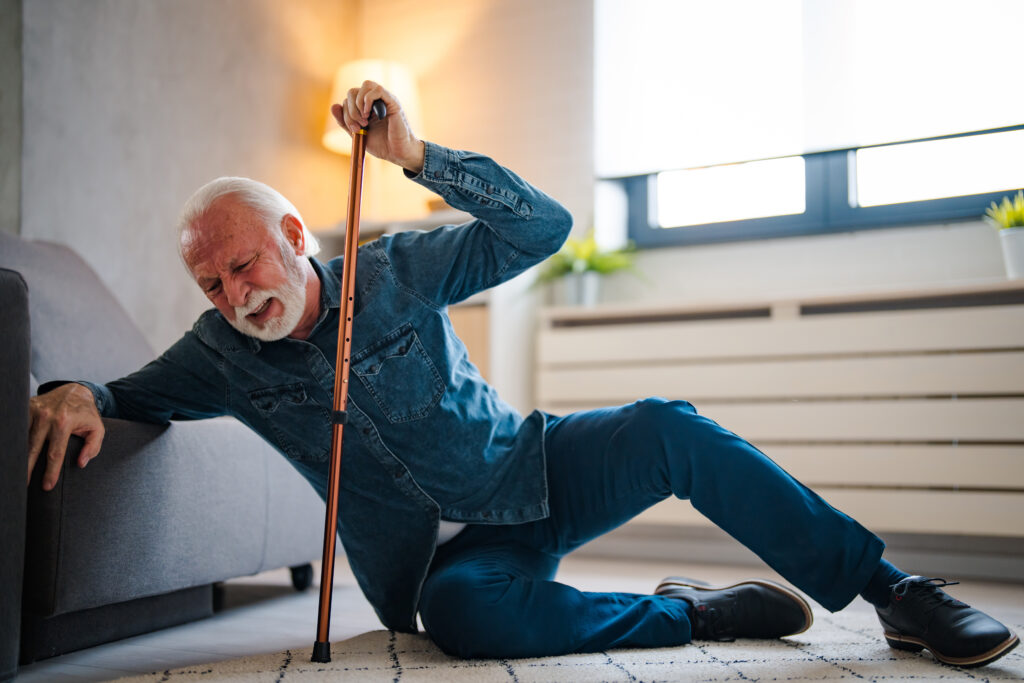
According to the Centers for Disease Control and Prevention, 3 million persons aged 65 and over are treated in emergency departments yearly for fall injuries. Similarly frightening, one out of every five falls’ results in a significant injury that may permanently impair a person’s mobility and independence.
Although evidence indicates that many injuries caused by falls can be avoided or reduced, the truth is that falls continue to impact older persons significantly. Fortunately, fall detection devices can help you avoid the worst-case scenario.
The Science Behind Fall Detection Devices
A variety of sensors and algorithms enables medical alert systems’ ability to detect falls. Sensors can be installed on a device or the person wearing it. These sensors frequently consist of accelerometers, gyroscopes, and barometers.
Accelerometers measure movement direction and speed, whereas gyroscopes monitor device orientation and rotation. Barometers measure changes in air pressure, which can be used to assess whether or not a fall has occurred.
When the sensors detect an abrupt change in movement, such as a fall, the algorithm is activated. The system aims to differentiate between falls and other motions, including bending over or sitting down. If the algorithm notices a fall, it will alert designated caregivers or emergency services.
Limitations of Fall Detecting Devices
Although fall detection technology has advanced significantly, it is not perfect. When using a medical alert system with fall detection, there are several restrictions to consider.
First, only falls that happen while the user is wearing the gadget may be detected by the sensors and algorithms. It will not be able to detect a fall if the device is off the person or out of reach.
Second, the technology occasionally causes erroneous warnings since it is not flawless. For instance, the sensors may perceive movement as a fall if the user performs strenuous activities like jogging or dancing.
Third, fall detection equipment may also not detect certain falls. For instance, the sensors might miss a fall if the person falls slowly or gently.
Technology for detecting falls is not a replacement for proper medical care. Even if the gadget provides a warning, emergency services may not respond in time to avoid injury or give appropriate care.
Why Should You Use a Fall Detection Device?
While older persons are at a larger risk of falling, other conditions may need fall detection at any age. According to the CDC, the following factors can raise a person’s risk of falling:
- A problem with the inner ear or poor balance
- A lack of vitamin D
- Medications associated with falls
- Postural hypotension is an unexpected drop in blood pressure after rising from a seated position.
- Impaired vision
- A foot or ankle problem
- Hazards in the home, such as dangling rugs or inadequate illumination
- A history of falls
- Muscle fatigue
- Gait and balance issues
- Arthritis, stroke, incontinence, diabetes, Parkinson’s disease, and dementia.
- Fear of falling
Best Guidelines for Utilizing a Fall Detection Device
Despite the drawbacks, fall detection technology can still be helpful for older adults and others with mobility problems. The following are some guidelines for using a medical alert system with fall detection:
Always keep the device on you: The gadget should be worn at all times, even while sleeping, to ensure it can detect a fall.
Regularly test the equipment: To ensure that the item is in good functioning order, it should be tested regularly per the manufacturer’s recommendations.
Keep an eye on the device’s range: If the device is out of range or the signal is faint, it may be unable to detect a fall. Be aware of the device’s range and stay within it.
Understand the technology’s limitations: Understanding the limitations of fall detection technology is essential in order to avoid relying completely on it for safety.
Seek medical attention as soon as possible following a fall: Even if the gadget generates a warning, it is critical to get medical attention quickly following a fall to guarantee adequate treatment.
What to Look for When Purchasing a Fall Detection Gadget
Choosing a fall detection device demands research on the various devices available, as well as their numerous features and benefits. Take into account the following factors:
- Is it going to be a stand-alone device or a component of a personal emergency response system?
- How reliable is the fall detection system? Is it susceptible to false alarms?
- Is the system monitored or unmonitored? (Live operators assess your needs in monitored systems, whereas unmonitored devices send the alert directly to 911.)
- What is the manufacturer’s level of dependability and responsiveness?
- What are the device’s communication requirements (landline, cellular service, Wi-Fi)?
- What is the monthly membership charge for monitoring, and what are the contract criteria and payment options?
- What is the installation procedure like?
- How long does the device’s battery typically last?
Answers to these and other queries should be available on the manufacturer’s websites and online user reviews. If a company cannot answer these questions, try looking for a fall-detection device elsewhere.
Wrap-up
Before the development of fall detection equipment, people who had fallen could have stayed on the floor for hours before anybody realized they needed assistance. By sensing a person’s rapid shift in position, fall detection systems can help lessen the chance of long-term harm. Even if the user cannot ask for assistance, the device signals an immediate emergency response to resolve the situation.
At Sequoia Senior Solutions, we believe that giving an aging loved one the best care involves more than just keeping an eye on their physical health; it also involves supporting them in leading a regular, happy, and independent life. With a fall detection gadget, you can ensure their protection and safety no matter where they are.